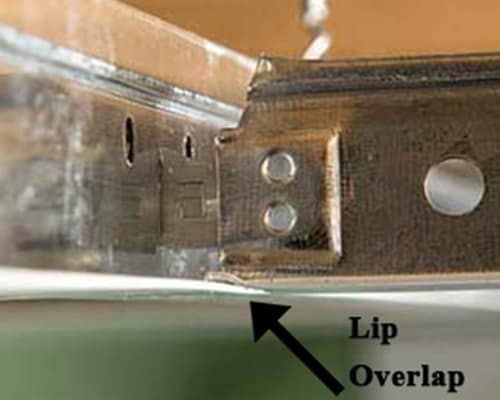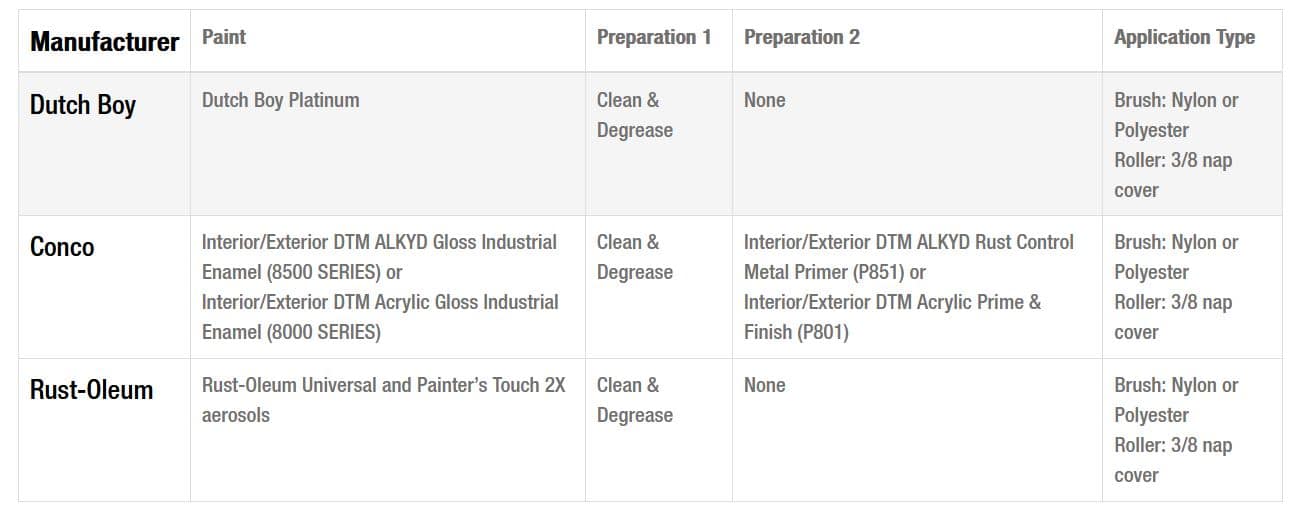They will quickly and easily fit into almost any ceiling grid system. Genesis Panels are lay-in ceiling panels and are available in the same sizes as fiber-based ceiling tiles, 2 x 2 and 2 x 4.
If you are using the standard 15/16 or 1 grid size for 2 x 2 or 2 x 4 tiles, yes, Genesis will easily install. There are some grids that use a stab and connect system that may cause the corners of the tile to sit higher than the rest of the tile. Genesis tiles are not intended for use with 9/16-Inch narrow line grid systems.
Any type of lighting that can be used with a drywall ceiling can be used with Genesis. Whichever type of light you choose, you must make sure that the weight of the light fixture is supported by and independently mounted on the T-bar grid system or structural framing and not the tiles.
We recommend the border tiles found here for homeowners, and here for commercial customers to match Genesis ceiling tiles.
To be sure the panels won’t sag. The 2 x 2 will be either 3mm or 5mm depending on the pattern selected. The 2 x 4 panels are 5mm.
Acoustic control is often seen as the main feature of a ceiling panel. The actual acoustical control provided by traditional mineral board, or acoustic ceiling tiles, is less than many believe. Although mineral board ceiling tiles have higher acoustical control than a drywall ceiling, marketers positioned mineral board tiles as acoustic ceiling tiles as product differentiators in order to sell more tiles. Other important ceiling tile product features that also need to be considered in any drop ceiling are aesthetics, reflectivity, indoor air quality, durability and sustainability. Acoustical control can be addressed in many ways other than ceiling tiles. For example, a carpeted floor is significantly more effective at absorbing sound than most ceiling tiles. Textile wall treatments and drapes also have a significant acoustic deadening effect. Today, new products and technology offer control through sound-absorbing partitions, carpeting, furniture, workspace-to-noise segregation, sound-masking technology, and specially designed sound absorbing materials. Generally, three methods are used to achieve sound control: absorption using drapes, carpets, absorptive panels, etc.; blocking using walls, floors, and layout; and covering up through sound masking.
While all three of these are recommended to achieve optimal results, covering up by increasing background sound produces the most dramatic improvement in speech privacy (a HIPPA privacy compliance concern) with the least disruption and typically the lowest cost. Additionally, one must determine if the area or room in question requires acoustic controls. Common areas or conference rooms definitely need consideration, but do multi-purpose areas or private offices? Given the abundance of acoustic control measures available today, ceiling acoustic considerations have become less important over the last decade.
The water evaporates and leaves no discoloration. Perhaps more important, Genesis does not permit the growth of mold and mildew.
The water will drip between the grid and ceiling tile. This will quickly alert you to the problem, as water will drip on the floor. Obviously, the leak still needs to be fixed, but the value of Genesis is that you can dry off the tile and reinstall it, undamaged.
For all Genesis tiles except our Recycled Series, use a skill saw or RotoZip to cut to odd sizes and a hole-saw or RotoZip for sprinkler heads or can lights. The tile can be trimmed with a utility knife. You may also use a metal angle ruler, score it and snap the tile.
For our new Genesis Recycled Series, a circular saw or table saw should be used with a fine-tooth or panel blade. See this guide for further information.
You can use any household cleaner. Just spray the cleaner onto a clean rag and wipe. You can also power-wash Genesis panels and even place them in an industrial dishwasher up to 110 degrees F. The tiles are unaffected by most corrosive chemicals, but you should avoid using acidic cleaners. Do not use abrasive cleansers to scrub.
We offer optional clips that may be used for drafty areas or uneven grid systems.
If your Genesis ceiling tile appears to sit higher on the ceiling grid corners, it is likely because of the type of ceiling grid you are using.
There are two main types of ceiling grid systems: a stab system, and a hook system. A stab grid system provides additional stability as the cross-tee overlaps the main beam to prevent twisting. This feature often qualifies stab systems for a Seismic Rating. A hook grid system is often a lighter-duty grid. See images below.
Stab Grid System
Hook Grid System
All stab grid systems, like Classic X Cliq and USG Donn DXL and Armstrong Prelude XL use an overlap design at the cross-tees. This causes about a 1/16-inch raising of the ceiling panel at the corners. This is the case for all ceiling panels, including Genesis, mineral board acoustic and vinyl-clad gypsum. See image below.
One method to reduce the raised tile problem with stab grid systems is to use hold-down clips in the ceiling tile corners. After your tiles are installed in the grid, identify which corners need to be clipped. From the top of the grid, simply push the clip onto the spline so that it presses the corners of the tile down. See image below.
Hook-style grid systems, like the Armstrong Prelude, result in a flat alignment of the main and cross-tees. Ceiling tiles in hook systems usually don’t show raised corners. See image below.
See Genesis-Light Reflectivity for technical information about Genesis ceiling panel light reflectivity.
110 degrees F
You may see a warning on this product regarding California’s Proposition 65, the Safe Drinking Water and Toxic Enforcement Act of 1986. It is intended to help Californians make informed decisions about protecting themselves from chemicals known to cause cancer, birth defects or other reproductive harm. The Proposition requires the state to maintain and update a list of chemicals known to the state to cause cancer or reproductive toxicity.
Proposition 65 is designed to inform consumers. This is not the same as a regulatory decision that a product is “safe” or “unsafe.” Our products emit no volatile organic compounds (VOC’s) and are in no way harmful if the product is used for its intended purpose. At ACP, customer satisfaction is our number one priority and we will be happy to provide any additional information, technical specs or data you may need on any of our products.
To paint our Genesis ceiling panels, the recommended paint and preparation steps are below. For proper adhesion, be sure to complete both preparation steps:






